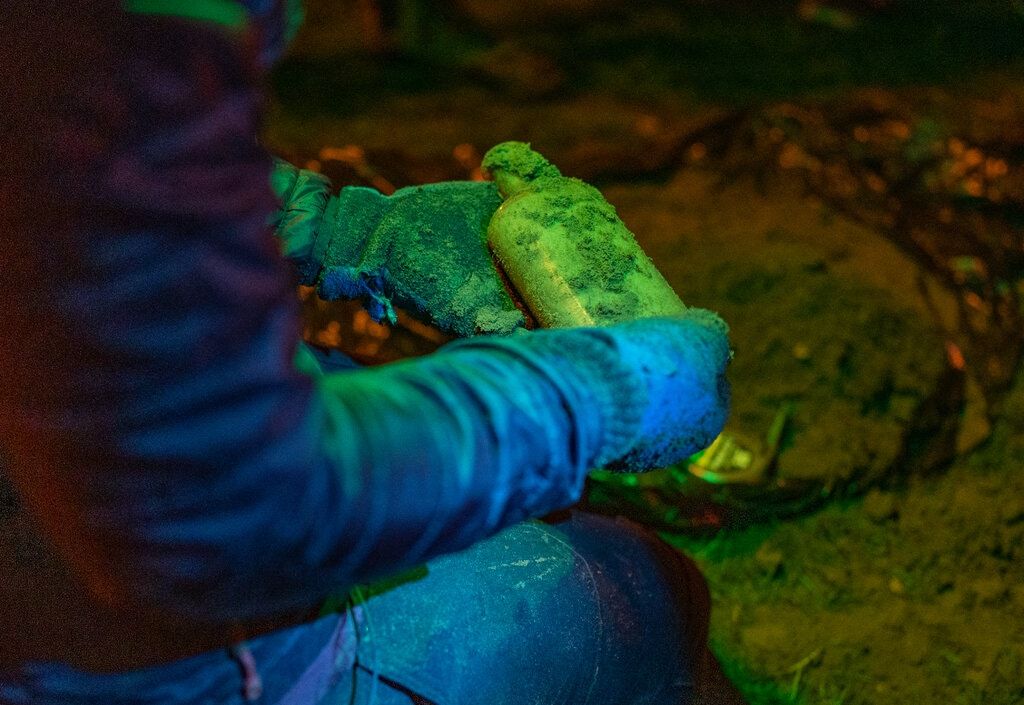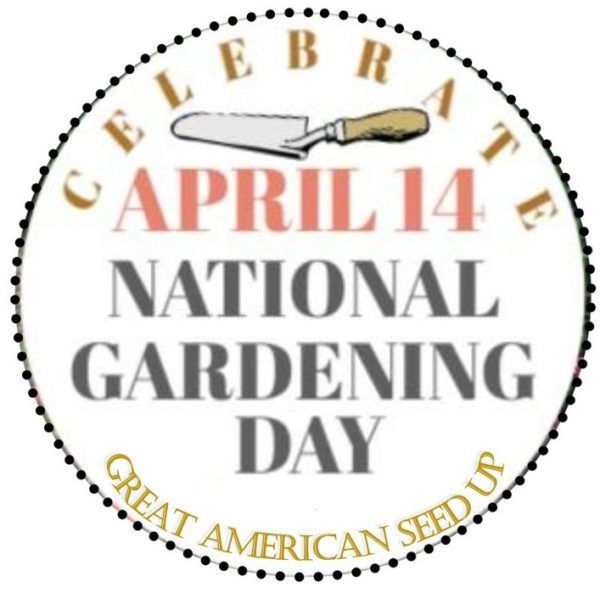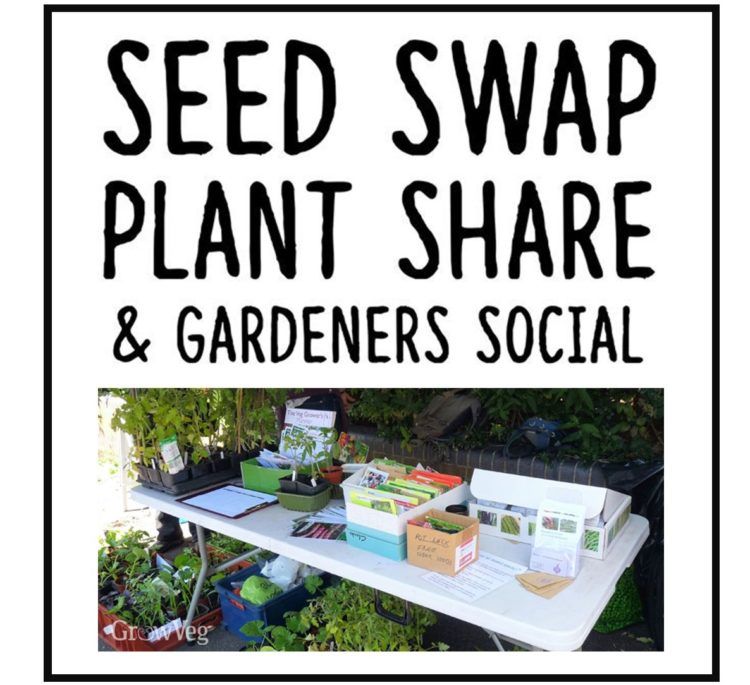The Great American Seed Up and Urban Farm U present Seed Up Saturday, on May 22, 2021, from 9 am – 12 noon Pacific time. Seed Up Saturday will feature a series of short seed saving classes jam packed with seed saving education that will empower you to increase your food security by learning to save seeds. Topics include urban seed saving, learning about and adapting landrace seeds to your backyard, wildflower cultivation and more. This is a free event and includes plenty of time for questions and answers. More information and registration is available at: SeedUpSaurday.org
As strange as it may sound, seed saving is a logical and accessible strategy to mitigate climate change. With Earth Day right around the corner, April 22, and the current challenges of modern chemical agriculture contributing to global warming, there is no better time to embrace gardening and seed saving.
Earth Day is widely recognized as the largest secular observance in the world, celebrated by more than a billion people annually as a day of to support and celebrate the earth.
Although Earth Day is widely publicized, many of us may not know much about the history of this critical day. Once you learn a bit more about why there’s a day reserved to honor the planet’s health, you’ll find there are plenty of meaningful ways to support the environment and to share the importance of the day with others.
Over 51 years ago, two concerned citizens launched what would become a global movement to recognize our connection to the environment as well as how our impacts were adversely affecting the earth’s health and our own. Originally modeled after the “teach ins” of the 1960’s, freshman Senator Gaylord Nelson (Wisconsin) and activist Denis Hayes organized events throughout this country to bring attention to the issues of the day: air and water pollution, species extinction and dangerous use of pesticides, herbicides and other poisons that threaten public health.
As a result of this momentous call to action, bipartisan efforts lead to the creation of the creation of the Environmental Protection Agency and passage of the Clean Water Act, Clean Air Act, and Endangered Species Act. These laws have benefited the environment and human health. For example, the Clean Air Act is credited with a 40-year track record of cutting dangerous pollution and has prevented more than 400,000 premature deaths and hundreds of millions of cases of respiratory and cardiovascular disease.1
But there is still so much to do. Today we are facing a new series of challenges. Food system activities, including producing food, transporting it, warehousing, packaging and storing wasted food in landfills, produce greenhouse gas emissions that contribute to climate change.
Concurrently, rainforests are being decimated in record numbers to make way for cattle grazing, logging, mining and monocrop production of food commodities such as palm oil or soy. Forests play a huge role in the carbon cycle on our planet. When they are cut down, not only does carbon absorption halt but also the carbon stored in the trees is released into the atmosphere as CO2. The increase in CO2 build up is linked to warming oceans, melting icebergs and a surge of catastrophic weather events.2
What is a caring earth citizen to do in this new reality of resource extraction and extreme environmental devastation? While we may not individually be able to solve climate change, collectively there are small things we can do to help reverse the damage.
Two of the best ways to make a difference are to grow food and save some seeds!
Did you know that the average distance our food travels to get to our plates is 1,500 miles? Large corporate farms contribute to global warming in many ways. Dependent upon fossil fuels to run large machinery and our desire to have on-demand cuisine (sourced from around the globe and not seasonal), we force our soil to perform “at any cost.” And we strip the soil’s nutrients through using chemical applications to allow us to have food on our tables when and where we want it.
Growing a home garden and saving seeds can help to mitigate these problems.
In order to save seeds, you have to grow the plant from which the seeds are harvested. Researchers at the University of California – Santa Barbara demonstrated that greenhouse gas emissions can be cut by 2 kilograms for every kilo of homegrown vegetables when compared to the store-bought counterpart.
Grow something delicious that you love. Eat it. The food travels 50 feet from your garden to your table – no fossil fuels needed. Plus, you will benefit from the nutritional advantages of homegrown foods.
When planning your garden, select food plants from “land race” seeds that readily adapt to various climates and that thrive without chemical applications or other inputs. When your garden matures, save the seeds from the plants that have grown exceptionally well and taste delicious. These plants have acclimated, and that flavor and resiliency will be conveyed into the following season’s crop!
Plants often seed so prolifically that they almost have to be shared due to the abundance produced by one plant. Community and school gardens, seed libraries, churches and neighborhoods are beginning to understand the importance and value of seed saving. One of the benefits in seed sharing is the connection that seed savers have with each other when enjoying the bounty. Saving seeds is so alluring and empowering many are baffled that they haven’t saved seeds longer!
Unfortunately, seeds have become commodities to be sold where once they belonged to communities or regions and were shared amongst their members. But Like many of our consumables around the world, China now grows many organic seed crops. Seeds produced in China have to be shipped thousands of miles to reach western consumers. This is another good reason to bring this ancient ritual “home.”
There is so much to learn about seeds and how they offer us so many tasty benefits, opportunities and connections. Join the Great American Seed Up on Saturday, May 22nd at 9 am Pacific time and be amazed by this tradition of growing and saving seeds. Register at SeedUpSaturday.org
- “The Clean Air Act.” Union of Concerned Scientists, 1 Feb. 2012, www.ucsusa.org/resources/clean-air-act.
- Media, Web Smart. “Climate Change – Deforestation.” Climate and Weather, 2020, www.climateandweather.net/global-warming/deforestation/#:~:text=Forests%20play%20a%20huge%20role,rot%20after%20the%20deforestation%20process.
- University of California – Santa Barbara. “How does your garden grow? Researchers model the effect of household gardens on greenhouse gas emissions. ” ScienceDaily. ScienceDaily, 7 September 2016. www.sciencedaily.com/releases/2016/09/160907125128.htm



